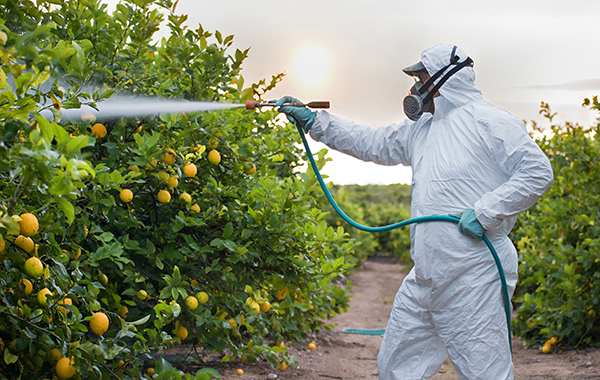© Brighteon.com All Rights Reserved. All content posted on this site is commentary or opinion and is protected under Free Speech. Brighteon is not responsible for comments and content uploaded by our users.
What the VAERS Data Tell Us About COVID Jab Safety (Jessica Rose Ph.D (2nd JAN2022))
172 followers
Follow
2
Download MP3
Share
Report
91 views • 01/02/2022
https://articles.mercola.com/sites/articles/archive/2022/01/02/vaers-covid-data.aspx
https://zbbb278hfll091.bitchute.com/ySITC1RcRsOS/a5UmRy0IOgDo.mp4
https://mercola.fileburst.com/PDF/ExpertInterviewTranscripts/DrMercola-JessicaRose-ParsingThroughtheVAERSDatabase.pdf
https://i-do-not-consent.netlify.app/#featured
https://i-do-not-consent.netlify.app/post/2020-12-01-r-rmarkdown/
https://openvaers.com/
The U.S. Vaccine Adverse Event Reporting System (VAERS) is among the best adverse event data collection systems in the world, but it's antiquated and difficult to use. Still, it’s a good way to detect safety signals that weren't detected during premarket testing or clinical trials
There are unmistakable, unprecedented safety signals in VAERS for the COVID shots. While the U.S. Food and Drug Administration and Centers for Disease Control and Prevention claim no deaths can be attributed to the COVID jabs, it’s impossible to discount 8,986 deaths in the U.S. territories alone, reported as of November 26, 2021
The estimated underreporting factor for COVID jab injuries in VAERS is between 31 and 100, so the actual death toll in the U.S. could be anywhere from 278,500 to 898,600
There’s a strong safety signal for female reproductive issues and for heart inflammation (myocarditis) in young men and boys. VAERS data show an inverse relationship between myocarditis and age, with youths being more frequently affected than older men
VAERS data are being deleted without explanation. Each week, about 100 or so reports are routinely deleted, so there are now thousands of inexplicably missing reports
Jessica Rose, Ph.D., a research fellow at the Institute for Pure and Applied Knowledge in Israel, has taken a deep-dive into the U.S. Vaccine Adverse Events Reporting System (VAERS), and in this interview she shares the details of what she’s finding.
VAERS, despite flaws and drawbacks, is one of the greatest tools we have to evaluate vaccine safety. It was implemented as a consequence of the 1986 National Childhood Vaccine Injury Act. While vaccine companies were given blanket immunity against liability for adverse reactions under this law, VAERS was created to collect injury reports in a centralized database so that the post-marketing safety of childhood vaccines could be monitored.
The system was actually launched in 1990, so we have three decades’ worth of data to compare trends against. Granted, vaccine injuries are notoriously underreported. Investigations have found only 10%1 to as little as 1%2,3 of injuries are reported.
When it comes to the COVID jab specifically, calculations4 by Steve Kirsch, executive director of the COVID-19 Early Treatment Fund, suggest injuries are underreported by a factor of 41. But despite that and other shortcomings, VAERS can still provide valuable information about a given vaccine.
Rose is a computational biologist with postdoc degrees in molecular biology and biochemistry. While a native Canadian, she did her postgraduate training in Israel, where she still lives. When her dream of surfing in Australia were dashed due to the COVID-19 outbreak, she decided to start writing code for statistics and graphics, and as the pandemic wore on, she applied those programming skills to the VAERS database.
No, People Are Not Filing Fake Reports
A common attempt to explain away the VAERS data by so-called fact checkers is to say that it’s unreliable because anyone can file a report. This is pure hogwash. Yes, anyone can file a report, but there are penalties for filing a false report, and the filing is time-consuming and exacting. We can be quite certain there’s no over-reporting going on.
It takes on average 30 minutes to fill out a report, and the system is set up in such a way that you cannot save anything until you get to the very end. Even worse, each page will time out after an allotted period of time, forcing you to start from the beginning if you take too long to fill in the details.
“This probably frustrates enough people that they don't start again,” Rose says. Indeed, the cumbersomeness of the website itself has often been cited as a reason for why doctors don’t report adverse events. Doctors don’t have the time to do it, and most patients don’t know they can file on their own. As noted by Rose:
“[VAERS] is probably one of the best adverse event data collection systems in the world, but it's completely lamentable. It’s antiquated ... Nonetheless ... it's a way to detect safety signals that weren't detected during premarket testing or clinical trials.
And it is functioning that way, because there are many, many safety signals [about the COVID jabs] being thrown out by the data. ....
Also...
Most Lethal ‘Vaccines’ in Medical History
Can Causation Be Established?
How to Assess Underreporting
What Are VAERS IDs and Why Are They Missing?
Data on Children Are Being Deleted
Myocarditis Report Pulled From Publication
Latent Infections Reactivated
https://zbbb278hfll091.bitchute.com/ySITC1RcRsOS/a5UmRy0IOgDo.mp4
https://mercola.fileburst.com/PDF/ExpertInterviewTranscripts/DrMercola-JessicaRose-ParsingThroughtheVAERSDatabase.pdf
https://i-do-not-consent.netlify.app/#featured
https://i-do-not-consent.netlify.app/post/2020-12-01-r-rmarkdown/
https://openvaers.com/
The U.S. Vaccine Adverse Event Reporting System (VAERS) is among the best adverse event data collection systems in the world, but it's antiquated and difficult to use. Still, it’s a good way to detect safety signals that weren't detected during premarket testing or clinical trials
There are unmistakable, unprecedented safety signals in VAERS for the COVID shots. While the U.S. Food and Drug Administration and Centers for Disease Control and Prevention claim no deaths can be attributed to the COVID jabs, it’s impossible to discount 8,986 deaths in the U.S. territories alone, reported as of November 26, 2021
The estimated underreporting factor for COVID jab injuries in VAERS is between 31 and 100, so the actual death toll in the U.S. could be anywhere from 278,500 to 898,600
There’s a strong safety signal for female reproductive issues and for heart inflammation (myocarditis) in young men and boys. VAERS data show an inverse relationship between myocarditis and age, with youths being more frequently affected than older men
VAERS data are being deleted without explanation. Each week, about 100 or so reports are routinely deleted, so there are now thousands of inexplicably missing reports
Jessica Rose, Ph.D., a research fellow at the Institute for Pure and Applied Knowledge in Israel, has taken a deep-dive into the U.S. Vaccine Adverse Events Reporting System (VAERS), and in this interview she shares the details of what she’s finding.
VAERS, despite flaws and drawbacks, is one of the greatest tools we have to evaluate vaccine safety. It was implemented as a consequence of the 1986 National Childhood Vaccine Injury Act. While vaccine companies were given blanket immunity against liability for adverse reactions under this law, VAERS was created to collect injury reports in a centralized database so that the post-marketing safety of childhood vaccines could be monitored.
The system was actually launched in 1990, so we have three decades’ worth of data to compare trends against. Granted, vaccine injuries are notoriously underreported. Investigations have found only 10%1 to as little as 1%2,3 of injuries are reported.
When it comes to the COVID jab specifically, calculations4 by Steve Kirsch, executive director of the COVID-19 Early Treatment Fund, suggest injuries are underreported by a factor of 41. But despite that and other shortcomings, VAERS can still provide valuable information about a given vaccine.
Rose is a computational biologist with postdoc degrees in molecular biology and biochemistry. While a native Canadian, she did her postgraduate training in Israel, where she still lives. When her dream of surfing in Australia were dashed due to the COVID-19 outbreak, she decided to start writing code for statistics and graphics, and as the pandemic wore on, she applied those programming skills to the VAERS database.
No, People Are Not Filing Fake Reports
A common attempt to explain away the VAERS data by so-called fact checkers is to say that it’s unreliable because anyone can file a report. This is pure hogwash. Yes, anyone can file a report, but there are penalties for filing a false report, and the filing is time-consuming and exacting. We can be quite certain there’s no over-reporting going on.
It takes on average 30 minutes to fill out a report, and the system is set up in such a way that you cannot save anything until you get to the very end. Even worse, each page will time out after an allotted period of time, forcing you to start from the beginning if you take too long to fill in the details.
“This probably frustrates enough people that they don't start again,” Rose says. Indeed, the cumbersomeness of the website itself has often been cited as a reason for why doctors don’t report adverse events. Doctors don’t have the time to do it, and most patients don’t know they can file on their own. As noted by Rose:
“[VAERS] is probably one of the best adverse event data collection systems in the world, but it's completely lamentable. It’s antiquated ... Nonetheless ... it's a way to detect safety signals that weren't detected during premarket testing or clinical trials.
And it is functioning that way, because there are many, many safety signals [about the COVID jabs] being thrown out by the data. ....
Also...
Most Lethal ‘Vaccines’ in Medical History
Can Causation Be Established?
How to Assess Underreporting
What Are VAERS IDs and Why Are They Missing?
Data on Children Are Being Deleted
Myocarditis Report Pulled From Publication
Latent Infections Reactivated
Keywords
FREE email alerts of the most important BANNED videos in the world
Get FREE email alerts of the most important BANNED videos in the world that are usually blacklisted by YouTube, Facebook, Google, Twitter and Vimeo. Watch documentaries the techno-fascists don't want you to know even exist. Join the free Brighteon email newsletter. Unsubscribe at any time. 100% privacy protected.
Your privacy is protected. Subscription confirmation required.





